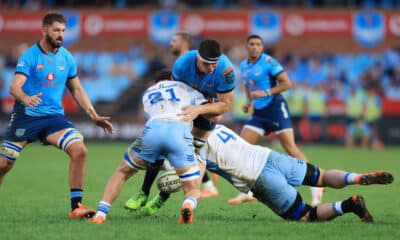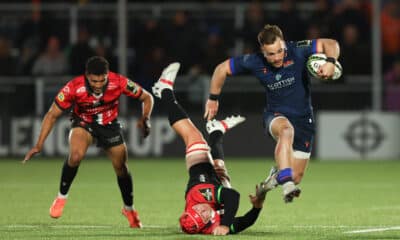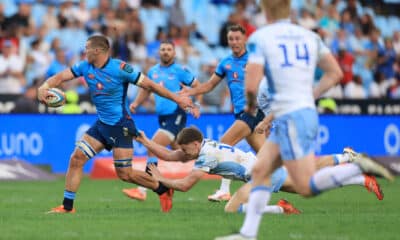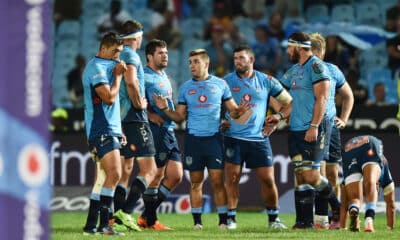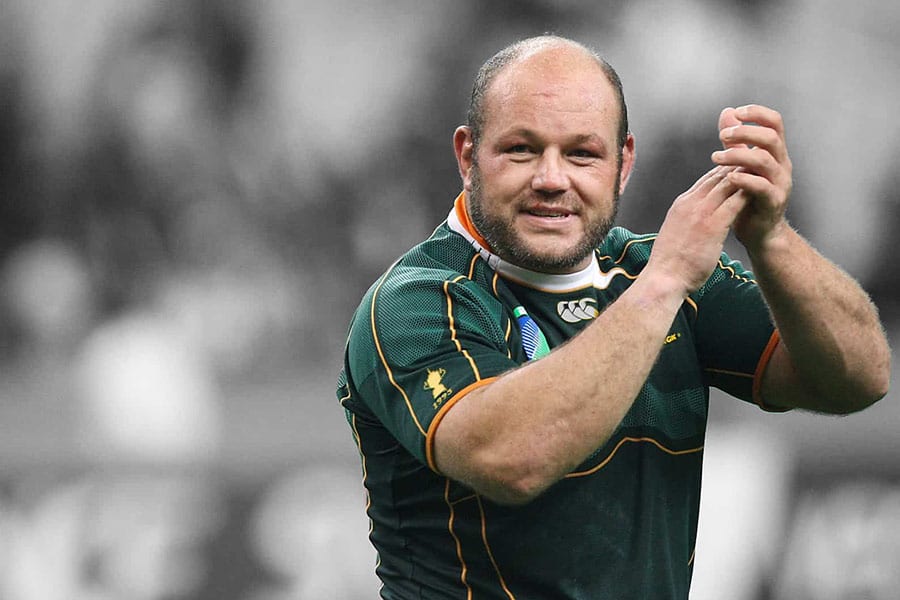
02 October 2019, by: Quintin van Jaarsveld
Springbok Rugby World Cup Dream Team
As Siya Kolisi and company aim to make South Africa proud in this year’s global showpiece in Japan, Quintin van Jaarsveld selects an all-time Springbok Rugby World Cup Dream Team.
The Rugby World Cup is the stage on which legends are made. The honour of representing one’s country in the game’s showpiece tournament and opportunity to etch one’s name in the annals of history brings out the very best in the world’s pre-eminent players.
The likes of Malcolm Marx, Pieter-Steph du Toit and Handré Pollard are expected to spearhead the South African surge in the Land of the Rising Sun. Already, superstars, the top trio could cement themselves as all-time greats over the next few weeks.
Kitch Christie’s “immortals”, who triumphed against all odds on home soil in 1995, set the benchmark for all future Springbok generations. Twelve years later, Jake White’s charges reached the summit in France. It should come as little surprise, then, that stars of these golden eras form the nucleus of my best-ever Springbok Rugby World Cup line-up.
Crucially, Dream Teams are selected based on players’ performances in a given tournament/s. Therefore, players selected aren’t necessarily the consensus best in their positions but rather those who made the biggest impact and played the most significant roles in their teams’ success at World Cups. As a result, the likes of Bismarck du Plessis, Schalk Burger and Joost van der Westhuizen failed to make the cut.
GET THE ADVANTAGE WITH OUR RUGBY BETTING OFFERS
Extensive pre-match and live in-play markets on every game.
Our legendary BET Boosts to give you extra value on every game!
Exclusive to BET.co.za customers.
A prime exactly of the above-mentioned selection criteria, “The Rolls-Royce of Fullbacks”, André Joubert, was arguably the better player and certainly had an important hand in the Springboks’ maiden triumph in 1995.
However, there’s no doubt that Montgomery played a more integral role in the class of 2007’s conquest. The tournament’s top points-scorer with 105, his accurate goal-kicking – as highlighted by his four penalties in the final against England at the Stade de France – was pivotal to the side’s success.
His skill, passion and intensity on the park matched his larger-than-life personality off it. All heart, his greatest contribution was stopping the seemingly unstoppable force that was All Blacks behemoth Jonah Lomu in the most famous of finals at Ellis Park. A well-rounded winger who had pace, killer instinct, tactical awareness and good kicking out of hand.
Stoic defence usually wins World Cups, and Fourie was an unrivalled genius in that regard in the No.13 jersey. He was the defensive organiser of the backline, whose rugby IQ and understanding of tackling timing and structure saw the Springboks neutralise the most dangerous attacking threats of his era. Strong and smart with ball-in-hand as well.
Jean de Villiers’ World Cup ‘curse’, which saw him sustain injuries early on in all three tournaments he played in, cruelly denied the former Springbok skipper an opportunity to leave his mark on the biggest stage of them all. A fresh-faced Steyn replaced the unlucky De Villiers in the 2007 showpiece and showed maturity well beyond his years.
He had an excellent tournament and kicked a long-range penalty – which would become his trademark – in the final to give the Springboks a nine-point buffer en route to becoming the youngest-ever World Cup winner at just 20 years of age. Showed his versatility in the 2011 tournament and is set to do the same in Japan.
A peerless predator and ultimate opportunist, Habana could create something out of nothing and punish teams for the smallest of mistakes. In the victorious 2007 campaign, the legendary left-wing emulated Chester Williams when he scored four tries in the pool game against Samoa and went on to tie Lomu’s record of eight tries in a single World Cup. Eight years later, he equalled the All Blacks great’s all-time World Cup record of 15 tries.
Both Stransky and Butch James lifted their game considerably to steer the Springboks to World Cup glory. Stransky had nerves of steel in the epic 1995 final, nailing three penalties and a drop-goal before slotting THAT iconic, title-clinching drop.
He also made history in the opener against Australia, when he became the first-ever Springbok to score in all four ways possible (try, conversion, penalty and drop goal) and was excellent throughout the tournament.
A tough call to make between Du Preez and Joost van der Westhuizen. Both were the best in the world in their respective primes and played starring roles in their teams’ triumph. The 2007 Springboks’ game plan centred on Du Preez and his exceptional tactical-kicking and game management.
He was the team’s most valuable player and he delivered in spades. He also produced what I consider the best scrumhalf showing in World Cup history in the 36-0 win over England in the pool game in Paris.
The toughest call to make as no No.8 has truly separated himself from the rest. Interestingly, both of South Africa’s world-beating coaches opted for retread locks in their respective finals, Christie gambling with Mark Andrews and White backing Danie Rossouw.
The latter was more of a utility player than the former, who was a specialist second-rower, and his grazing try-saving cover tackle on Mark Cueto was a major moment in the 2007 decider.
One of the great Springbok eighthmen, Gary Teichmann, never played in a World Cup. Schalk Burger was considered as he shifted from the side to the back of the scrum on occasion, but in terms of an out-and-out No.8, Vermeulen cracked the nod.
He had a consistently strong 2015 campaign and his brilliance from the back of the scrum put Du Preez over in the corner for the match-winning try in the tense quarterfinal clash against Wales. Like Steyn, he has an opportunity to add to his legacy in the Land of the Long White Cloud.
Underrated for most of his career, Smith was often a silent assassin and always did the hard yards. He was a powerful ball carrier, a fierce and tireless tackler and a great lineout jumper, which saw him make several appearances in the second row. His greatest strength, however, was his incredible consistency.
Pienaar was the right man at the right time to lead the Springboks to their fairy-tale title triumph in 1995. A class act on and off the field, he led by example. Christie’s charges prided themselves on their fitness and Pienaar set the tone in training and with his high workrate and how he put his body on the line on game day.
Matfield was the leading lock of his generation and one of the all-time great second-rowers. A lineout genius who ruled the sky, he ran the set-piece like clockwork. Through countless hours of studying tape, he knew his opponents inside out and wreaked havoc on the opposition’s throw. A man for the big occasion, the Test centurion produced a Man of the Match performance against the English in the 2007 final.
The quintessential hard man of Springbok rugby, Bakkies was the most feared/respected enforcer in the game. Had an unquenchable hunger for contact that saw him clatter into the opposition with venomous velocity. Solid as a rock, he made a habit of smashing sides into submission, gave South Africa go-forward and was a perfect partner for the more streamlined and cerebral Matfield.
One of several players in the team who played in multiple World Cup tournaments, Van der Linde was a titanic force at tighthead who gave the 2007 World Cup-winning side a strong scrummaging platform through terrific technique and pure power. Provided his muscle and experience to the 2011 team as well.
Much like Pienaar, Smit was a born leader whose ability to get the best out of his teammates and steer the ship made him invaluable. Like Pienaar’s connection with Christie, Smit had a special relationship with White, and his disputed selection over the younger, inform Du Plessis was vindicated as he guided the 2007 vintage to glory. Aside from his leadership, his set-piece play was exemplary.
The only Springbok with two World Cup winner’s medals. The fact that he achieved this 12 years apart is a testament to the legendary loosehead’s professionalism and unrivalled longevity. Du Randt was a scrummaging colossus and hard-grafting prop whose actions spoke louder than words. He was named South African Player of the Year in 1997, won the Players’ Player of the Year award in 2004 and will take his rightful place in the World Rugby Hall of Fame in November.
JOIN BET.CO.ZA NOW AND GET 100% DEPOSIT MATCH UP TO R1000
Open your BET.co.za account here
Deposit using your preferred method
Your bonus gets added immediately!
MORE RUGBY














